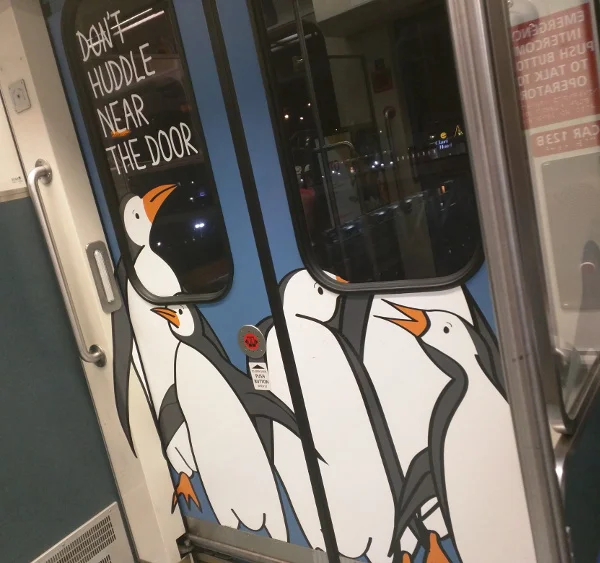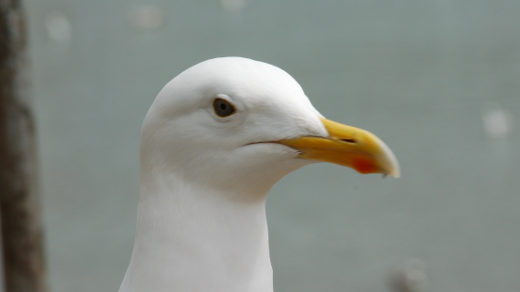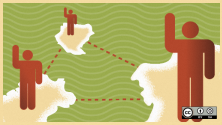The fifth annual Seattle GNU/Linux Conference (better known as SeaGL), held Oct. 6–7 at Seattle Central College, was again a great event. Seattle even rolled out the welcome committee for us with penguins on the train and geek-oriented tagging posted around town.

opensource.com
Excellent sessions
As with my first SeaGL last year, I had some great talks to choose from. The conference schedule's "Happening at the same time" list on each talk's description made it really easy to rip through the various options for each time slot to plan my agenda. It's an awesome feature! All conference schedules should have it.
Here are some of the sessions I really enjoyed:
PreOS Security CEO Paul English's "Detecting BadBIOS, Evil Maids, Bootkits, and Other Firmware Malware" was very dense with information. Having Snowden and bootkits as prerequisite research certainly suggested that there would be a lot to think about after his presentation. (The situation isn't as bad as he described, I keep lying to myself.) My homework is to follow up with material from him and Lee Fisher of PreOS and tie it to various articles I've read by Linux security architect Kyle Rankin over the years.
"Deep dive" in the title of Mike Hamrick's "A Filesystem and Disk I/O Deep Dive Using blktrace and debugfs" suggested a wealth of information, and his talk did not disappoint. He started off nicely with an example, then explained blocks and inodes. Most of the presentation dove into examples that tracked synchronous and asynchronous writes to where they live on the disk.
Although I work on the technical side of the house, I also like to see community-oriented sessions with or without technical content. SeaGL had great offerings in this area.
"Programming in Prison: Web Development Behind Bars" described the challenges of teaching programming in an environment with no internet access and difficulty getting new materials into the classroom. In addition to the technical aspects, presenter Sarabeth Jaffe covered the program's successes and challenges in helping ex-convicts find jobs once they get out of prison. She introduced us to Zeal, an offline API browser, and said syncing disconnected Moodle instances is a technical and practical challenge.
"Open Source From Standing Rock To Your Home Community" was interesting from a technical perspective. How do you set up networking, power, food, and heat for an impromptu city of tents when winter is coming? Lisha Sterling shared how her team managed all of that while also dealing with digital intrusion, espionage, and physical sabotage. Ever had someone steal your microwave dish off a hill? When the temperatures are below zero degrees Fahrenheit? Or provided tech support while camping in the snow? That's the coldest data center I've heard of. I'll bet they keep the computers inside in Antarctica.
"ROI: Return on Inclusion" presented some examples of how inclusive groups are more successful than homogeneous groups. Unfortunately, the open source community is lagging behind on inclusion, even compared to other parts of the tech sector. Presenter Tony Sebro also posed questions that led to an open discussion on improving inclusion in our community.
Opensource.com community manager Rikki Endsley's keynote on Saturday was important for the open source community. Just like our code, our documentation needs people to write it and other people to review it. Her talk inspired me to contribute to our collective knowledge by writing this conference report for Opensource.com.

opensource.com
Volunteers make the experience
I want to thank all the volunteers who put in so much work so the rest of us could enjoy the conference. I especially appreciated the volunteers who ran the speakers office, as their recommendations were quite useful for the talks I submitted.
I'm also grateful for the sponsors who funded the conference and everyone who had a table in the expo hall. At least one expo hall conversation led me to see a talk I hadn't considered before. At least one talk got me to follow up in the expo hall. Both are indications of a strong ecosystem and valuable hallway track.
There are always challenges in putting on a conference, and SeaGL handled one large challenge very well. Although everyone knows Seattle gets a lot of rain, no one particularly expects flooding inside the building. When a cooling system problem led to several rooms flooding, SeaGL's sponsor jumped in to find new rooms, and the SeaGL volunteers had to make room changes the night before the conference. My talk, scheduled in the conference's first time slot, was moved to a non-obviously placed room—and we still filled it up. The SeaGL volunteers did a great job getting the word out about the changes.
I highly recommend participating in volunteer-run open source conferences like SeaGL. By nature, they are community oriented and bring in great content. I'm already looking forward to SeaGL next year.






Comments are closed.